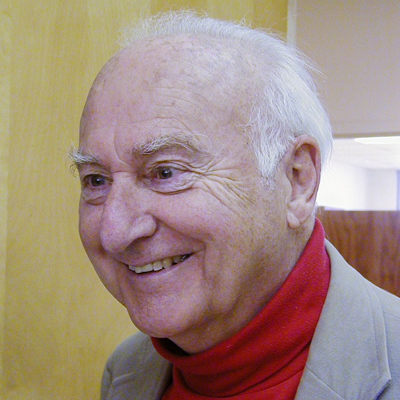Peter William Meredith John passed away on January 22, 2015 at the age of 91. He is survived by his wife Elizabeth of 61 years, a daughter, a son, and two grandchildren. He will be remembered by friends and family for his warmth, kindness and humor and by his colleagues for his many valuable contributions to the Design of Experiments.
Peter John was born on August 20, 1923 in Porthcawl, Wales. In 1941, Peter won a scholarship in mathematics to Jesus College, Oxford, and later, after enlisting in the Royal Air Force, spent additional months at Oxford learning advanced physics and using that knowledge in support of the war effort.
He finished his BA in 1944 and next completed a new post-graduate diploma program (now called the MSc) in statistics.
In 1948, he came to the USA as an instructor at the University of Oklahoma. He stayed for further graduate study in mathematics, and received his PhD in 1955, writing a dissertation on birth and death processes.
Peter next accepted a position at the University of New Mexico, but left after two years to become a Research Statistician at the Chevron Research Corporation. One attraction was that Henry Scheffé was a consultant there.
Henry Scheffé used to say that consulting gave him a wonderful source of problems. Henry told Peter that there are new research problems lurking everywhere. You can hardly avoid stumbling over several, so long as you are inquisitive enough, persistent enough, or lucky enough, to spot them. Peter took this advice to heart and many of his contributions came from industrial problems he was confronted with at Chevron and at the Gordon Research Conferences on Statistics in Chemistry and Chemical Engineering, and later as a consultant to the semiconductor industry.
One example came when a client wanted to do a 23 factorial experiment (eight points). But when the raw material arrived, there was only enough for six runs. Peter knew what to do with eight runs and four runs. But what could be done with six runs? Out of this came the resolution V design for four factors in twelve runs and, in 1962, Peter published the general theory of three-quarter replicates. These designs are often known as John’s 3/4 fractional factorial designs.
Another example occurred working with an engineer on a 24 factorial: sixteen runs in two weeks. Following established procedure, the run order was carefully randomized. However, the machinery broke down after the first week and there were only eight runs. Eight runs chosen at random from sixteen are a mess. So why not design the experiment to give insurance against early termination? It would have been much better if the run order wasn’t randomized. Peter worked out that the first eight points should have been one of the two resolution IV half-replicates. Then, the next four points could make a twelve point fraction of resolution V, and, if all went well, the final four points would complete the full factorial.
In 1967, Peter John accepted a professorship in the mathematics department at the University of Texas at Austin. His book Statistical Design and Analysis of Experiments was published by Macmillan in 1971 and was republished in 1998 in the Society of Industrial and Applied Mathematics’ series “Classics in Applied Mathematics”. Peter then pursued research in incomplete block designs, publishing a book on that subject in 1980. In the eighties, his talents with experimental design led him to work with the semiconductor industry and the quality assurance movement, resulting in another book, Statistical Methods in Engineering and Quality Assurance, in 1990.
Peter published over 60 refereed papers. He was elected a Fellow of the American Statistical Association (1976), the Institute of Mathematical Statistics (1977) and later the Royal Statistical Society. In 1991, he was awarded the Shewell Prize of the American Society for Quality Control.
While at the University of Texas, Peter developed a reputation as an excellent teacher. In his career he supervised thirteen PhD students and more than 60 MA students. In 1999, he received an Award for Outstanding Teaching in the Graduate School.
A former PhD student of Peter’s, introducing him as the Keynote Speaker and Guest of Honor at a Quality and Productivity Research Conference in 2003, had this to say: “I had two requirements for my dissertation advisor: the topic had to be interesting and my advisor just had to be a decent person. With Peter, I found both.”
Written by Paul Tobias,
Statistical Consultant

1 comment on “Obituary: Peter W.M. John, 1923–2015”